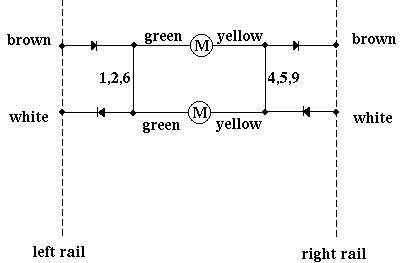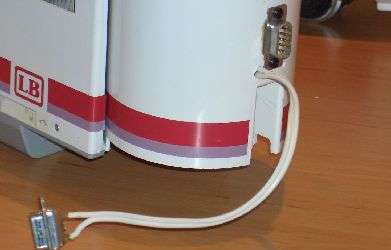
Killing two birds with one stone...
A LCE equiped with two drives runs into difficulties on an analogue layout when entering a dead track segment, f.i. at a red signal: The front tractive unit will stop while the other at the end will continue to run. The scenario is known, the wheels keep rotating on the spot...There is only one thing for it: Redesigning the current supply. And as one is at it anyway, it is a good idea to weed out the temporary jolting now, which usually results from dirty collector shoes.
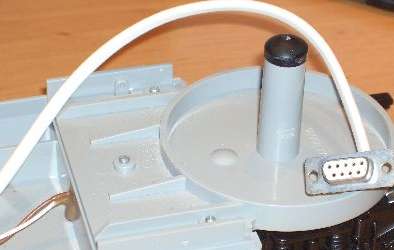
To sychronize both of the trains drives, both of them need
to be supplied with power from the unit in front - depending
on the direction of travel. This requires a double-wire cable
connecting the front and rear unit. Furthermore four diodes
and a couple of connectors - for still being able to dismantle
the Tupper can.
9-pole sub-D connectors were handy in that moment and they were easy to fit into the housing (see first picture). The cable shown on the first picture is used to connect the next car's swivel truck which is equiped with ball bearing wheels for improving the collection of electric current.
9-pole sub-D connectors were handy in that moment and they were easy to fit into the housing (see first picture). The cable shown on the first picture is used to connect the next car's swivel truck which is equiped with ball bearing wheels for improving the collection of electric current.
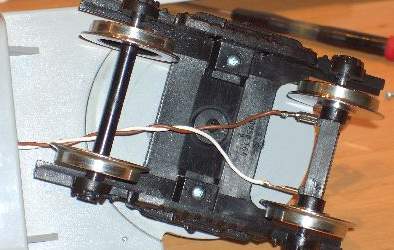
The swivel truck of the train's second motor unit also gets such
an axle, say improved current collection on both ends.
An additional connector like described above is not required for
this unit as the axle is part of the unit's assembly.
In both of the motor units a diode is inserted into each of the cable cores feeding power to the motors. The diodes provide that power is supplied to both of the motor units only from the front unit - depending upon direction of travel. The connection cable is required to make use of both drives regardles of the direction. The diodes' dimensioning should be based upon the main power supply's output also taking a short circuit into regard. Rule of thumb as for the diodes' power rating: The more the better.
In both of the motor units a diode is inserted into each of the cable cores feeding power to the motors. The diodes provide that power is supplied to both of the motor units only from the front unit - depending upon direction of travel. The connection cable is required to make use of both drives regardles of the direction. The diodes' dimensioning should be based upon the main power supply's output also taking a short circuit into regard. Rule of thumb as for the diodes' power rating: The more the better.
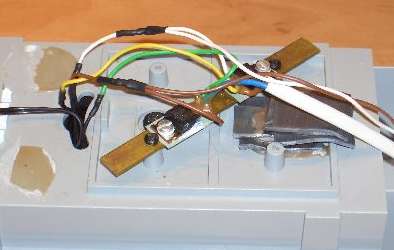
As the diodes will warm up it is recommended to mount them on a heat sink or cooling plate. The diodes used in this case are MBR20100CT Schottky diodes - which certainly are not undersized. As the interior is invisible and plenty of space is available, an elegant finish was not taken into regard. Main thing: It works !
The pulling capacity was raised by adding some oddments of lead to the motor units right above the drives.
